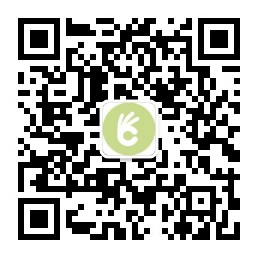1.装饰器
1 #!/usr/bin/env python
2 # -*- coding:utf-8 -*-
3 import time
4 def cal(l):
5 start_time=time.time()
6 res=0
7 for i in l:
8 time.sleep(0.1)
9 res+=i
10 stop_time = time.time()
11 print('函数的运行时间是%s' %(stop_time-start_time))
12 return res
13
14
15
16 print(cal(range(100)))
17
18
19 def index():
20 pass
21
22 def home():
23 pass2.装饰器预演
1 #!/usr/bin/env Python
2 # -*- coding:utf-8 -*-
3 import time
4 def timmer(func):
5 def wrapper(*args,**kwargs):
6 start_time=time.time()
7 res=func(*args,**kwargs)
8 stop_time = time.time()
9 print('函数运行时间是%s' %(stop_time-start_time))
10 return res
11 return wrapper
12
13 def timmer1(func):
14 def wrapper(*args,**kwargs):
15 start_time = time.time()
16 res = func(*args,**kwargs)
17 stop_time = time.time()
18 print('函数运行时间是%s' %(stop_time-start_time))
19 return res
20 return wrapper()
21
22
23 @timmer
24 def cal(l):
25 res=0
26 for i in l:
27 time.sleep(0.1)
28 res+=i
29 return res
30
31 res=cal(range(20))
32 print(res)
33
34
35 def index():
36 pass
37
38 def home():
39 pass3.高阶函数
1 #!/usr/bin/env python
2 # -*- coding:utf-8 -*-
3 '''
4 高阶函数定义:
5 1.函数接收的参数是一个函数名
6 2.函数的返回值是一个函数名
7 3.满足上述条件任意一个,都可称之为高阶函数
8 '''
9 # import time
10 # def foo():
11 # time.sleep(3)
12 # print('你好啊林师傅')
13
14 # def test(func):
15 # # print(func)
16 # start_time=time.time()
17 # func()
18 # stop_time = time.time()
19 # print('函数运行时间是 %s' % (stop_time-start_time))
20 # foo()
21 # test(foo)
22
23 # def foo():
24 # print('from the foo')
25 # def test(func):
26 # return func
27 # res=test(foo)
28 # # print(res)
29 # res()
30
31
32 import time
33 def foo():
34 time.sleep(3)
35 print('来自foo')
36
37 #不修改foo源代码
38 #不修改foo调用方式
39
40 #多运行了一次,不合格
41 # def timer(func):
42 # start_time=time.time()
43 # func()
44 # stop_time = time.time()
45 # print('函数运行时间是 %s' % (stop_time-start_time))
46 # return func
47 # foo=timer(foo)
48 # foo()
49
50
51 #没有修改被修饰函数的源代码,也没有修改被修饰函数的调用方式,但是也没有为被修饰函数添加新功能
52 # def timer(func):
53 # start_time=time.time()
54 # return func
55 # stop_time = time.time()
56 # print('函数运行时间是 %s' % (stop_time-start_time))
57 #
58 # foo=timer(foo)
59 # foo()
60 4.函数嵌套
1 #!/usr/bin/env python
2 # -*- coding:utf-8 -*-
3 # def bar():
4 # print('from bar')
5 #
6 # def foo():
7 # print('from foo')
8 # def test():
9 # pass
10
11 def father(auth_type):
12 # print('from father %s' %name)
13 def son():
14 # name='linhaifeng_1'
15 # print('我的爸爸是%s' %name)
16 def grandson():
17 print('我的爷爷是%s' %auth_type)
18 grandson()
19 # print(locals())
20 son()
21 # father('linhaifeng')
22 father('filedb')5.加上返回值
1 #!/usr/bin/env python
2 # -*- coding:utf-8 -*-
3 import time
4 def timmer(func): #func=test
5 def wrapper():
6 start_time=time.time()
7 res=func() #就是在运行test()
8 stop_time = time.time()
9 print('运行时间是%s' %(stop_time-start_time))
10 return res
11 return wrapper
12
13 @timmer #test=timmer(test)
14 def test():
15 time.sleep(3)
16 print('test函数运行完毕')
17 return '这是test的返回值'
18
19 # res=test() #就是在运行wrapper
20 # print(res)6.加上参数
1 #!/usr/bin/env python
2 # -*- coding:utf-8 -*-
3 import time
4 def timmer(func): #func=test1
5 def wrapper(*args,**kwargs): #test('linhaifeng',age=18) args=('linhaifeng') kwargs={'age':18}
6 start_time=time.time()
7 res=func(*args,**kwargs) #就是在运行test() func(*('linhaifeng'),**{'age':18})
8 stop_time = time.time()
9 print('运行时间是%s' %(stop_time-start_time))
10 return res
11 return wrapper
12
13
14
15 # @timmer #test=timmer(test)
16
17 def test(name,age):
18 time.sleep(3)
19 print('test函数运行完毕,名字是【%s】 年龄是【%s】' %(name,age))
20 return '这是test的返回值'
21
22 @timmer
23 def test1(name,age,gender):
24 time.sleep(1)
25 print('test1函数运行完毕,名字是【%s】 年龄是【%s】 性别【%s】' %(name,age,gender))
26 return '这是test的返回值'
27
28 res=test('linhaifeng',age=18) #就是在运行wrapper
29 print(res)
30 # test1('alex',18,'male')
31
32 # test1('alex',18,'male')
33
34
35
36
37
38 # def test2(name,age,gender): #test2(*('alex',18,'male','x','y'),**{})
39 # #name,age,gender=('alex',18,'male','x','y')
40 # print(name)
41 # print(age)
42 # print(gender)
43 #
44 # def test1(*args,**kwargs):
45 # test2(*args,**kwargs) #args=('alex',18,'male','x','y') kwargs={}
46 #
47 # # test2('alex',18,gender='male')
48 #
49 # test1('alex',18,'male')7.装饰器实现
1 #!/usr/bin/env python
2 # -*- coding:utf-8 -*-
3 import time
4 def timmer(func): #func=test
5 def wrapper():
6 # print(func)
7 start_time=time.time()
8 func() #就是在运行test()
9 stop_time = time.time()
10 print('运行时间是%s' %(stop_time-start_time))
11 return wrapper
12
13 @timmer #test=timmer(test)
14 def test():
15 time.sleep(3)
16 print('test函数运行完毕')
17 test()
18
19 # res=timmer(test) #返回的是wrapper的地址
20 # res() #执行的是wrapper()
21
22 # test=timmer(test) #返回的是wrapper的地址
23 # test() #执行的是wrapper()
24
25 # @timmer 就相当于 test=timmer(test)8.验证功能装饰器
1 #!/usr/bin/env python
2 # -*- coding:utf-8 -*-
3 user_list=[
4 {'name':'alex','passwd':'123'},
5 {'name':'linhaifeng','passwd':'123'},
6 {'name':'wupeiqi','passwd':'123'},
7 {'name':'yuanhao','passwd':'123'},
8 ]
9 current_dic={'username':None,'login':False}
10
11
12 def auth_func(func):
13 def wrapper(*args,**kwargs):
14 if current_dic['username'] and current_dic['login']:
15 res = func(*args, **kwargs)
16 return res
17 username=input('用户名:').strip()
18 passwd=input('密码:').strip()
19 for user_dic in user_list:
20 if username == user_dic['name'] and passwd == user_dic['passwd']:
21 current_dic['username']=username
22 current_dic['login']=True
23 res = func(*args, **kwargs)
24 return res
25 else:
26 print('用户名或者密码错误')
27
28 return wrapper
29
30 @auth_func
31 def index():
32 print('欢迎来到京东主页')
33
34 @auth_func
35 def home(name):
36 print('欢迎回家%s' %name)
37
38 @auth_func
39 def shopping_car(name):
40 print('%s的购物车里有[%s,%s,%s]' %(name,'奶茶','妹妹','娃娃'))
41
42 print('before-->',current_dic)
43 index()
44 print('after--->',current_dic)
45 home('产品经理')
46 shopping_car('产品经理')10.带参数验证功能装饰器
1 #!/usr/bin/env python
2 # -*- coding:utf-8 -*-
3 user_list=[
4 {'name':'alex','passwd':'123'},
5 {'name':'linhaifeng','passwd':'123'},
6 {'name':'wupeiqi','passwd':'123'},
7 {'name':'yuanhao','passwd':'123'},
8 ]
9 current_dic={'username':None,'login':False}
10
11 def auth(auth_type='filedb'):
12 def auth_func(func):
13 def wrapper(*args,**kwargs):
14 print('认证类型是',auth_type)
15 if auth_type == 'filedb':
16 if current_dic['username'] and current_dic['login']:
17 res = func(*args, **kwargs)
18 return res
19 username=input('用户名:').strip()
20 passwd=input('密码:').strip()
21 for user_dic in user_list:
22 if username == user_dic['name'] and passwd == user_dic['passwd']:
23 current_dic['username']=username
24 current_dic['login']=True
25 res = func(*args, **kwargs)
26 return res
27 else:
28 print('用户名或者密码错误')
29 elif auth_type == 'ldap':
30 print('鬼才特么会玩')
31 res = func(*args, **kwargs)
32 return res
33 else:
34 print('鬼才知道你用的什么认证方式')
35 res = func(*args, **kwargs)
36 return res
37
38 return wrapper
39 return auth_func
40
41 @auth(auth_type='filedb') #auth_func=auth(auth_type='filedb')-->@auth_func 附加了一个auth_type --->index=auth_func(index)
42 def index():
43 print('欢迎来到京东主页')
44
45 @auth(auth_type='ldap')
46 def home(name):
47 print('欢迎回家%s' %name)
48 #
49 @auth(auth_type='sssssss')
50 def shopping_car(name):
51 print('%s的购物车里有[%s,%s,%s]' %(name,'奶茶','妹妹','娃娃'))
52
53 # print('before-->',current_dic)
54 # index()
55 print('after--->',current_dic)
56 home('产品经理')
57 # shopping_car('产品经理')








0